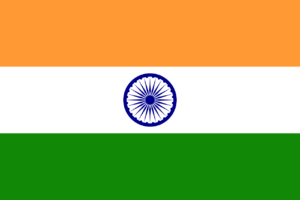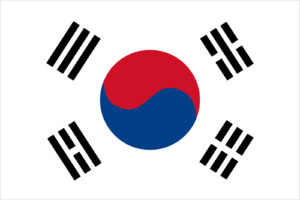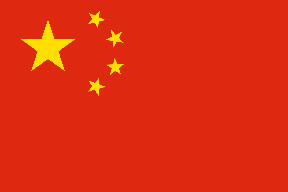Written on: December 1, 2020 by Cassandra Taylor
As we move toward the end of 2020, it seems like an appropriate time to reflect on the shifts we have all made over the past year. Working from home has become the norm for many of us, and there have been some conspicuous changes in the global regulatory sector. We have observed a surge of new products coming to market to help fight COVID-19 such as cleaners, disinfectants and hand sanitizers. These types of product already tend to be highly regulated and the increase in market demand has caused regulators to look more closely at many of them. We are also seeing an increase in recalls for certain products, such as hand sanitizers containing toxic methanol.
On the other hand, COVID-19 has effectively tied up resources and slowed down several government actions. In many countries, this has reduced the amount of new legislation being brought forward. While we have seen a bit of a lull in North American regulatory activity, several Asian regulatory bodies have continued to forge ahead with new initiatives. This column will discuss some of the key regulatory updates we have recently seen around Asia this year.
Philippines mandates GHS labeling; reinstates licensing requirements for certain household products
In August 2020, FDA Circular No. 2025-025 was published on the Philippines Food & Drug Administration (FDA) website. The Circular implements Guidelines of Administrative Order No. 2019-0019, Reinstatement of Licensing as Importers, Exporters, Manufacturers, Wholesalers, Distributors, Retailers, or Re-Packers of Those Engaged in Certain Household/Urban Hazardous Substances, & from the Requirement of Prior Registration and/or Notification of Said Products. This finalized a guideline on licensing, registration and labeling requirements for household/urban hazardous substance products (HUHS).

The new guideline, which will take effect in August 2023, incorporates the Globally Harmonized System of Classification & Labeling of Chemicals (GHS) into the regulatory requirements for HUHS. This means that consumer products sold in the Philippines will soon need to be classified and labeled according to GHS.
In addition to implementing GHS requirements, the Circular establishes guidelines to register and authorize HUHS products, updates the categorization of HUHS products, establishes licensing and inspection guidelines and aims to ensure compliance of HUHS establishments with FDA regulatory standards.
Exporters have expressed concern about the reinstatement of licensing and registration requirements for HUHS because it will make doing business in the Philippines more expensive. Under the Circular, HUHS organizations must secure a License to Operate (LTO) before engaging in the manufacture, importation, exportation, sale and distribution of HUHS products.
HUHS establishments must also obtain a Certificate of Product Registration (CPR) for their products, with only FDA-licensed HUHS establishments permitted to apply for a CPR. The newly approved Circular covers importers, exporters, manufacturers, toll manufacturers, wholesalers, distributors, retailers and re-packers of certain HUHS products who must comply with FDA licensing and registration requirements to be allowed to handle these goods.
India proposes new version of “India REACH” Draft
In March of this year, India released the fourth version of the Draft Chemicals (Management & Safety) Rules, also known as “India REACH.” India REACH includes provisions for labeling and handling of hazardous chemicals, as well as notification and registration requirements for specified chemicals. The Rules are meant to come into force on the date of their official publication, which was unknown at SPRAY’s press time. Substances listed in Schedule VI of the Draft Rules have registration requirements when they are manufactured, imported and/or placed in Indian Territory in quantities greater than one tonne per year. Registration will need to take place within 1.5 years of the date of listing on Schedule VI, which currently contains 37 substances. A technical dossier must be submitted as part of the registration and a chemical safety assessment is required for quantities above 10 metric tonnes per year. A joint registration may be submitted, but this is not a requirement.

Priority substances are listed in Schedule II of the Draft Rules. Importers must notify the Chemicals Regulatory Division at least 15 days prior to importing priority substances. Chapter V of the draft rules outlines additional labeling and packaging requirements for Schedule II substances. There are currently 750 Schedule II priority substances and this list is expected to grow.
Foreign entities wishing to notify and register products in India will need to do so through an Authorized Representative. Much like the Only Representative in Europe, the Authorized Representative acts “on behalf of the foreign Manufacturer to ensure compliance with these Rules and shall be liable for the discharge of all obligations under these Rules.”
South Korea consults on updates to GHS classification list
In September, South Korea’s National Institute of Environmental Research (NIER) published NIER Notice No. 2020-408 for consultation, which announced a draft amendment of the Korean Regulations on classification and labeling of chemical substances. The proposed amendment would update classification and labeling information for 11 previously published toxic substances and one restricted substance. Forty-five additional substances are set to be designated as new toxic chemicals, with obligatory classifications and label elements.
South Korea consults on revising packing material recycling symbols
In July, the South Korean Ministry of Environment (MOE) carried out an online survey about the necessity of optimizing the “separate-collection mark (recycling symbols)” on packing materials. The survey found that 72.3% of participants think it is essential to amend the recycling symbol and 66.9% believe that the current recycling symbol is unhelpful in recycling the packing materials.

In September, the MOE released the draft, Standards of Labeling Quality & Structure of Packaging Material Grade & Recycling Symbols for comment. It aims to optimize the requirements for recycling symbols on packing materials. The draft proposes to add recycling methods along with recycling symbols onto packing materials. The proposed recycling symbols have been enlarged from 8mm to 12mm, which allows for more space to include the additional required information.
China consults on latest Draft Law to replace Decree 591
In October, China’s Ministry of Emergency Management (MEM) consulted on an updated Draft of its new Law on the Safety of Hazardous Chemicals. If approved, this Law is expected to replace Decree 591, which is the overarching law governing hazardous chemicals in China. The Draft Law is largely based on Decree 591, with some key changes related to the obligations that industry will face in dealing with hazardous chemicals.

The Draft includes new registration requirements for companies storing large amounts of hazardous chemicals, a clearer definition of ministry roles, as well as greater emphasis on safe hazardous chemical disposal. The latest draft introduces exemptions for Research & Development and low-volume substances. It is unclear if this will be the final version of the draft. Since this is an official law—rather than a measure or decree—the approval procedure typically takes longer.
It will be interesting to see how things play out in the regulatory world as we move into the colder winter months here in North America. Although COVID-19 cases continue to rise, various industries and governments have implemented additional safety precautions in order to continue productive work with a lowered risk of transmission. As we begin to adjust to our “new normal,” we are cautiously optimistic about the future of the chemicals industry. One thing is for certain; we will forge ahead, and many of us look forward to discovering the new innovations that will come about through this difficult time.
We will keep you updated with news about the final versions of the proposed draft standards mentioned above, as well as other key regulatory news and updates. For questions about your regulatory obligations in Asia and around the world, feel free to contact our team at Nexreg. SPRAY